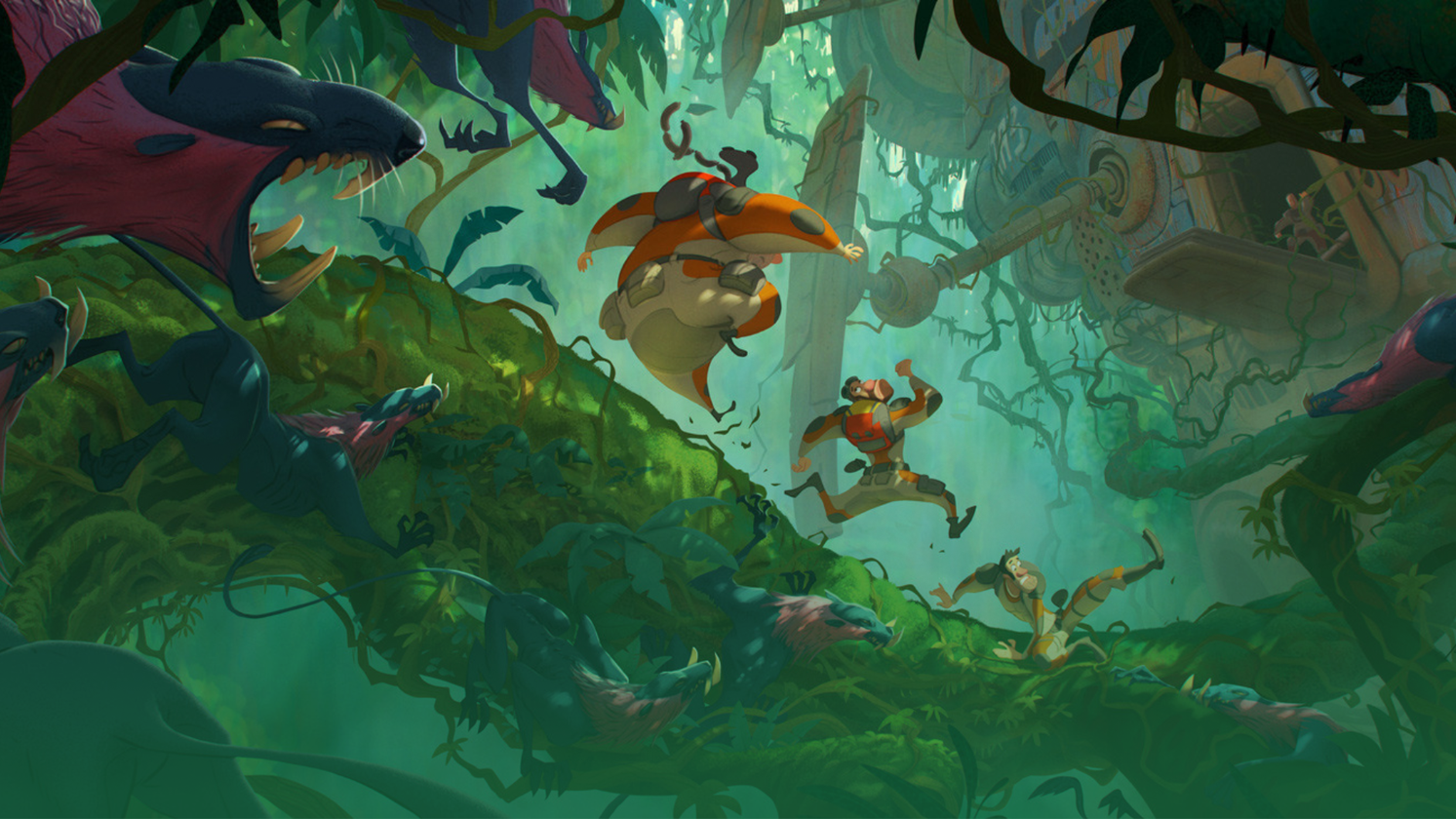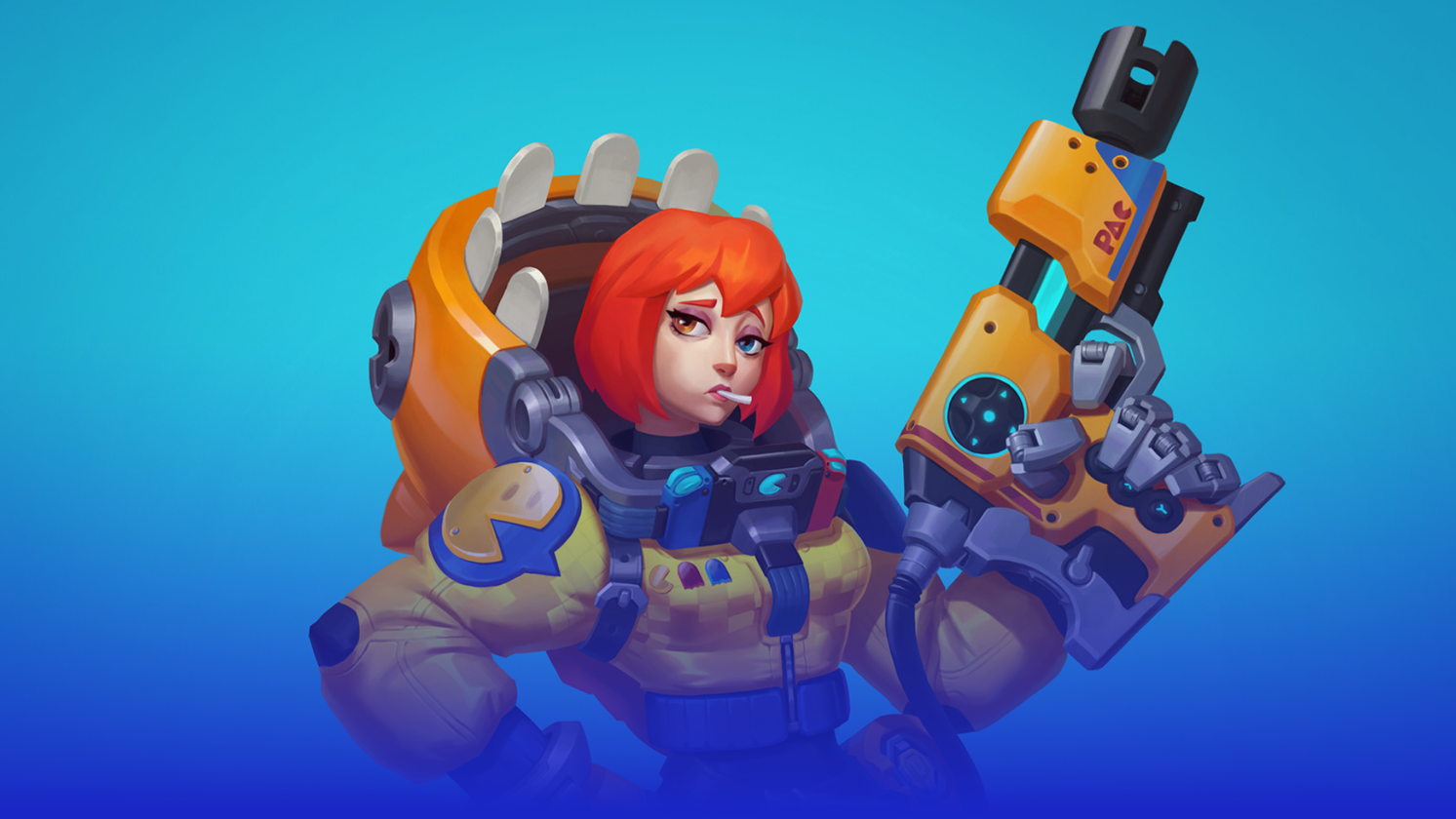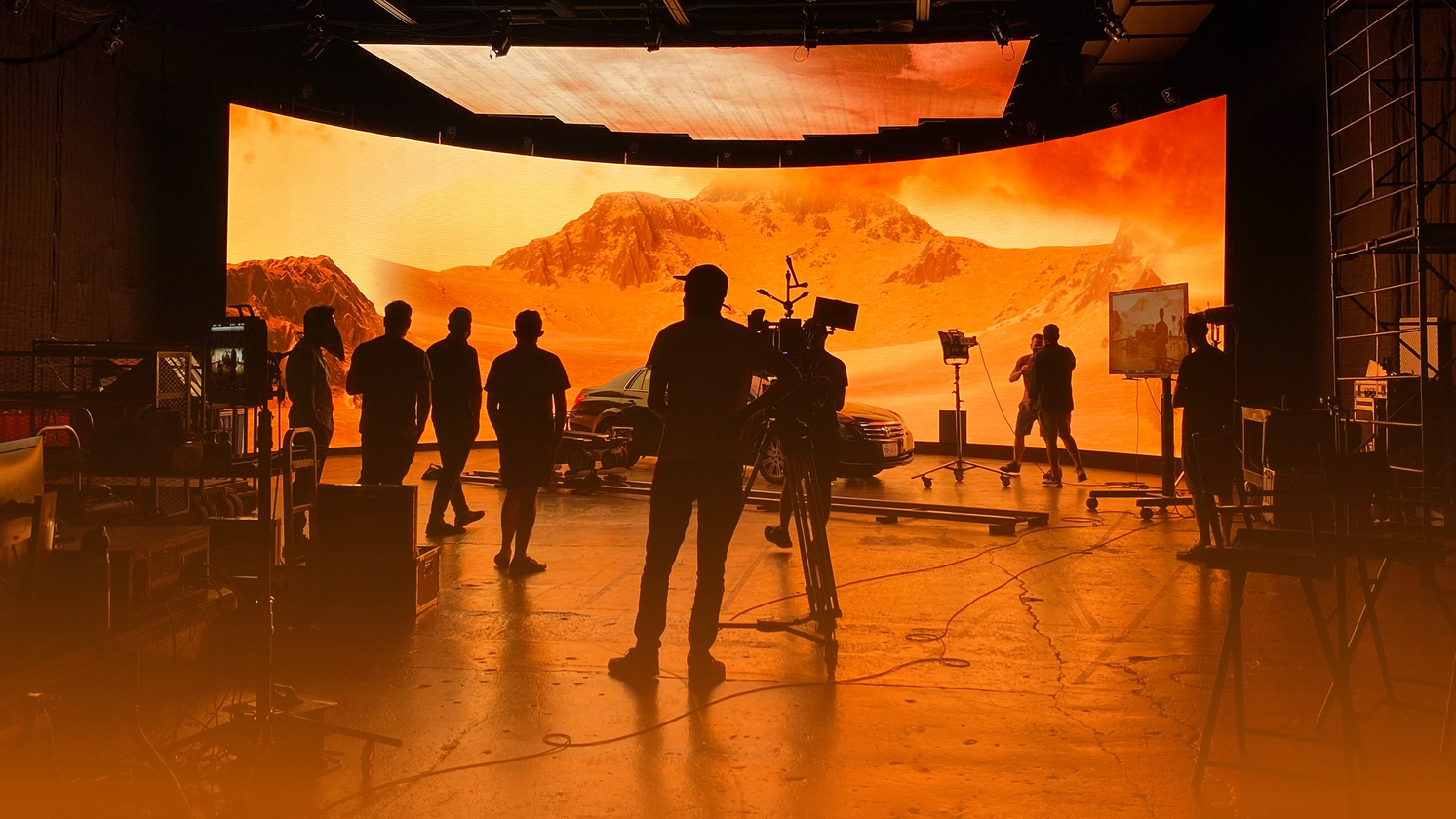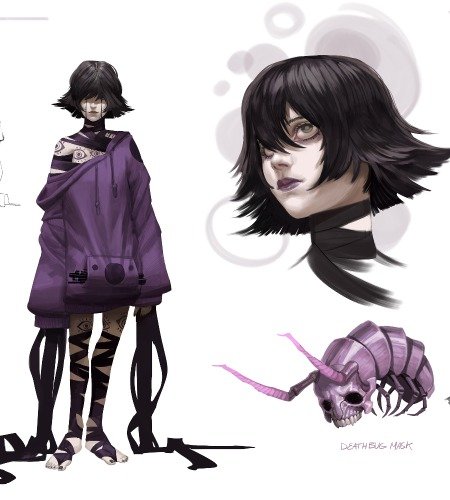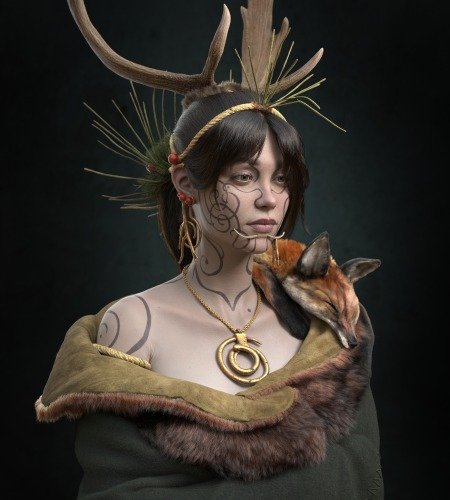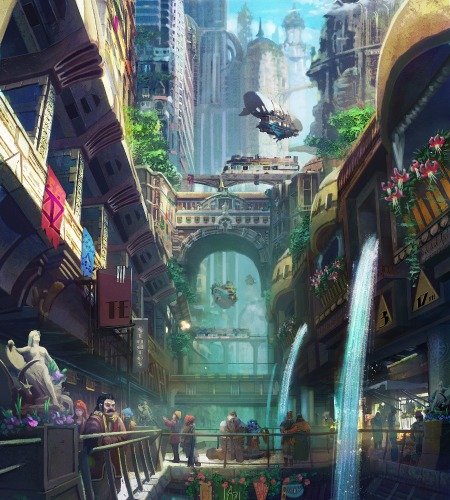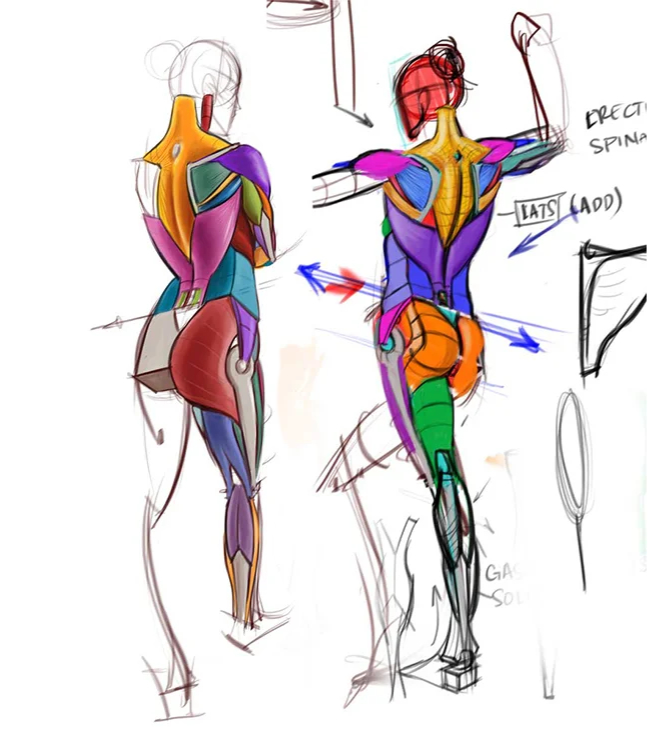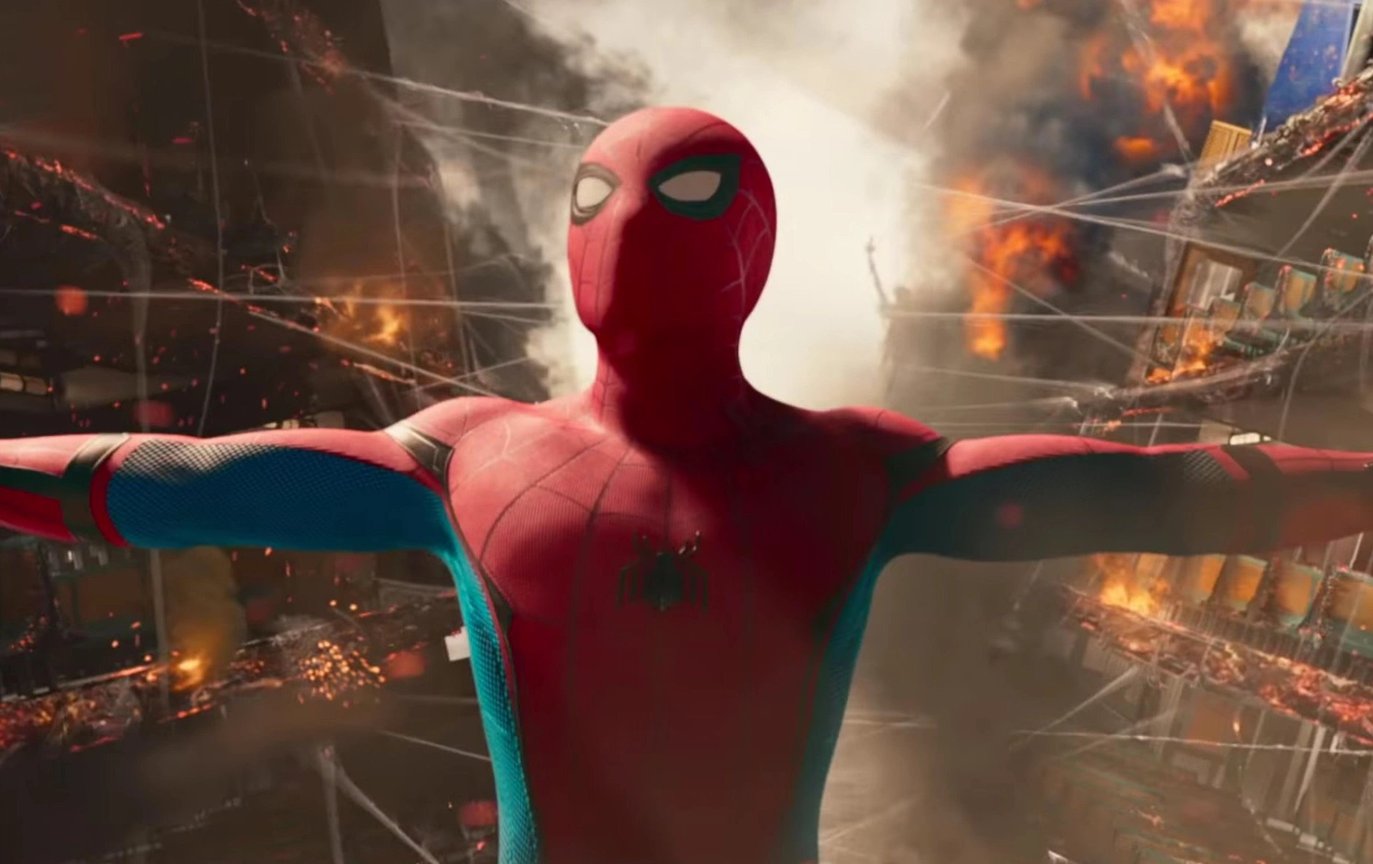Figuratively Speaking
Freelance artist Lanny Markasky gives an in-depth look at how he captured the spirit of the class and gave it form in Patrick Jones’s course, Figure Drawing: Anatomy of Style.
Introduction
My name is Lanny Markasky, and I’m an artist in New York City. I grew up in Santa Cruz CA in a very creative environment, with my mother being an artist, and my father a guitar builder. I moved to Los Angeles at 17 to study art, and after receiving my BFA in illustration from CSU Long Beach, I moved to NY with my wife to pursue a career. I’ve been working since 2015 as a freelance storyboard and concept artist in the advertising and film industry. I work on everything from commercials and music videos, to tv and movies. Figurative drawing and painting has always been very important to me, as well as crucial for the type of work I do. I’ve continued studying and working from life at places like The Art Students League of NY, and Chelsea Classical Studios. I’ve always done so much figure drawing from life, I didn’t see much reason to take a figure drawing class on the computer, but I signed up for Patrick Jones’s Anatomy of Style course anyway, and I’m very glad I did!
Working Traditionally in an Online Course
It was really interesting working traditionally for an online figure drawing course. It really wasn’t much different from taking a class in person. You get the same lectures, the same demos, same feedback, etc. Even submitting homework was as simple as taking a picture on my iPhone and sending it in. The one thing I feel like is worth talking about is the idea of learning figure drawing, without a live model. While there is no substitute for drawing from life, Patrick does bring the next best thing by supplying great photos, under good lighting conditions, that he’s taken personally. The class itself is also focused more on understanding concepts of figure drawing and anatomy, so Patrick’s handouts and references were really more than enough. The drawing below is an example I did from a photograph, but you can see how I’m applying what I’m learning, using a photo as reference, but not simply copying the photo.

However, aside from only doing homework from the photos, I made an effort to always go to figure drawing sessions, and do the homework from life as well, and I would highly recommend it to anyone else studying figure drawing. Working from life made it easier for me to understand the concepts, and the better I understood the concepts the easier it was to apply them to working from photos and imagination.


Drawing The Muscles
Something I found very helpful was the way Patrick introduced the muscle structures. His instruction is a result of his years of experience studying anatomy. He’s not just regurgitating the words of an anatomy book and explaining where muscles attach, he makes it clear what’s most important, depending on the given area. In one place it might help most to understand the origin and insertion of a muscle, in another place, it might be better to understand the grouping of multiple muscles, then somewhere else you might want to focus on the larger overall form and think less about some of the specific anatomy. This way of learning sped up my progress and made it easier to come up with a process of working.


Analyze, Understand, Draw
Patrick was always drilling into our heads the idea of AUD, analyze, understand, draw. I found this to be incredibly important in my work. It got me to slow down a little and really understand what I was looking at before I made the mark. Not only did it make my drawings better and more descriptive, but it actually speeds up my process because I was getting the markdown right the first time instead of having to go back and fix it.

The Spirit Of The Pose
I loved how Patrick talked about capturing the spirit of the pose because it can’t be captured by copying a photograph, you have to really make an effort to understand and communicate what’s happening. It’s a great way to create a more interesting drawing that tells a story. I consider one of the most important things in capturing the spirit of the pose, capturing the relationship between the three large masses in the body, the head, ribcage, and pelvis. When I look at a model I’m trying to understand the pose. Is there a weight-bearing leg or is the weight more evenly distributed over both legs? Are there areas of the body that are stretching and other areas that are pinching? How are the masses oriented in space and in perspective? Is there anything twisting? Which muscles are activated and which are relaxed? Where is the skeleton underneath the muscles? And so on. Answering all these questions in my drawing gives me not just a copy of what I’m seeing, but it allows me to clearly communicate what’s happening in a more convincing way.

The Hip Structure
I really enjoyed the in-depth study of the hip structure. Patrick had very clear diagrams to help identify the forms and did a great job explaining the differences between men and women. A little thing that made a big difference for me was learning about the fatty pads woman can carry under their great trochanters on their thighs. A bump I’ve seen plenty of times working from life, but never understood what it was or how to properly describe it. He also had great mnemonic devices for remembering them, like the butterfly to describe the gluteus medius and maximus.


My Process
I approach drawing the female figure the same way as I would a male. I start by trying to capture the gesture, really emphasizing the movement between the head, ribcage, and pelvis. I try to enhance the drawing more by looking for rhythms throughout the body, finding areas where I can draw lines through the body to find where they might relate to. For example, continuing the line of the neck may take me to the hip. Learning about the differences between men and women, I was able to exaggerate my drawings of the female model to enhance the effect. For example, the smaller ribcage, the wider hips, even the additional fatty pads in certain areas.

Hands And Feet
Hands and feet are always tricky, and I believe they’re two areas that should be carefully designed. It was great having Patrick explain his approach, and learning how he chooses to simplify. Like most of his teaching, he focused a lot on gesture and exaggeration, which helped me think more about getting the energy and the action of the hands and feet. It was also helpful getting the hands and feet down in general shapes first before getting too descriptive of the structure.

Seeing The Development
Patrick really got me thinking about making art, and making confident decisions in my work, rather than using drawing purely to study a subject. Before this class, I focused a lot more on understanding the figure in line, which I still think is a great exercise, but as an illustrator who is very interested in design, I wanted a new approach. It was great working with Patrick because he helped me get to a place where I was still concerned with three-dimensional form, gesture, and rhythm, but I was able to work more with shapes of value. Furthermore, he helped me embrace line as part of a finished drawing, where I would normally use line only to construct the figure and then render in the value. It’s so easy to get caught up in trying to create the illusion of realism, we can forget that we’re still just putting charcoal on paper and that we need to embrace the strengths of the medium.

Final Thoughts
Patrick was an amazing teacher and provided really helpful feedback. He actually gave most of his feedback during the live Q and A’s, where he would go over our homework right in front of us. It was great because not only could we ask questions, but we also received input from our fellow classmates.
What was so exciting for me about this class was how different it was from all my other figure drawing classes. It really is a different learning figure drawing from an illustrator than is it from a fine artist. Since everything is from imagination and photo reference, I learned a lot more about making decisions instead of simply capturing what I see. Working from life has always been more about studying the model and describing form. Patrick got me thinking more about just creating good art.
I would highly recommend this class to any artist interested in figure drawing, especially if they’re in the illustration field. Patrick really knows his stuff and he’s very passionate about it. He also really cares about his students learning and progressing.
You can see more of Lanny’s work here.
Instagram: @Lanny.Markasky


